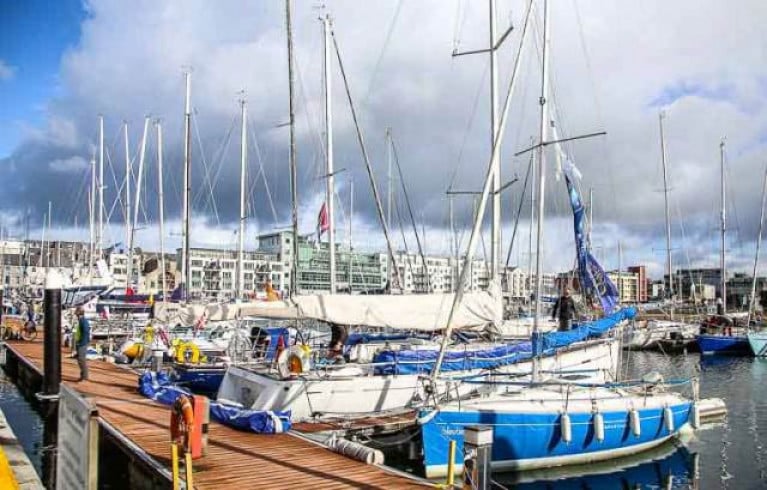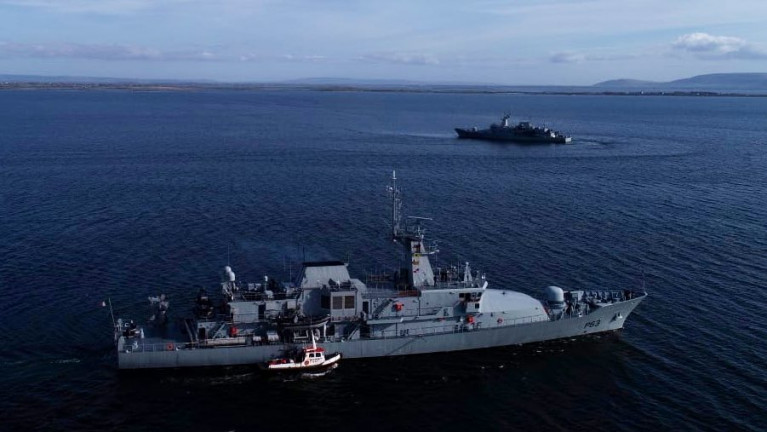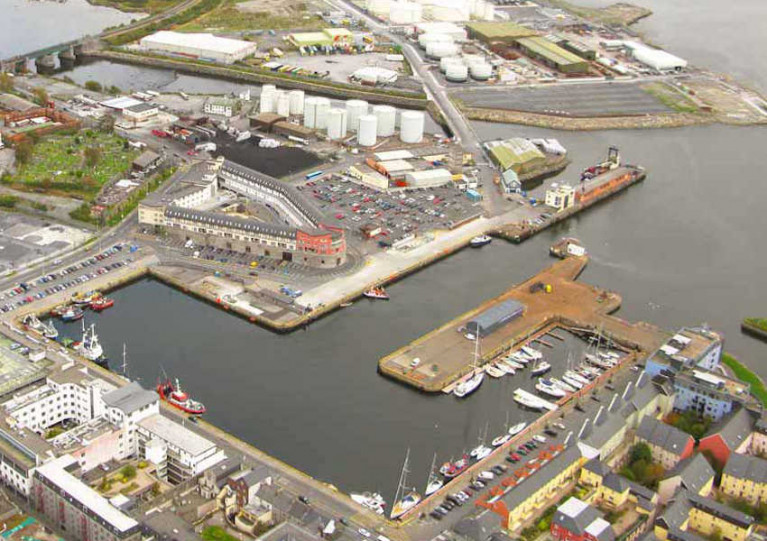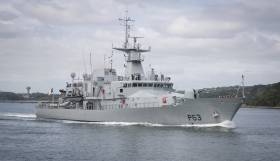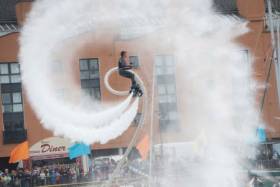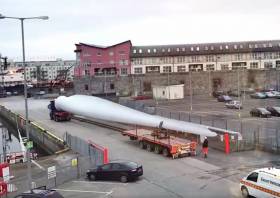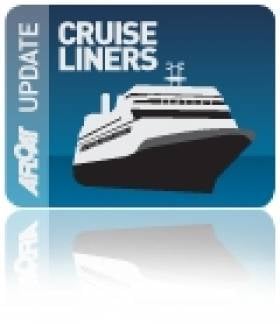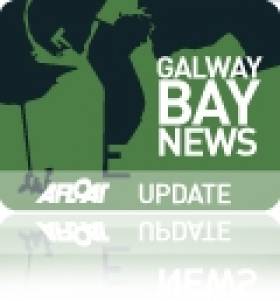Displaying items by tag: Port of Galway
Marinas and public slipways around the coast are due to open next week as part of a phased lifting of Covid-19 restrictions.
Port of Galway harbourmaster Capt Brian Sheridan has said the port’s public slipway and its marina will be open to those living within five kilometres.
Sailing is permitted within HSE guidelines, once landing ashore is not beyond five kilometres of a boat owner’s primary residence.
However, no visiting leisure craft are permitted to enter the marina under procedures drawn up to match HSE Covid-19 guidelines.
Hand sanitisers have been installed at the marina gangway, social distancing must be observed and any boat owners requiring the crane for boat lifts will have to complete a self-declaration of health, Capt Sheridan has said.
Galway City Council has opened up beaches, but car parks at all but Silver Strand remain closed.
Bathing water quality testing won’t begin until June 1st. Blackrock Diving Tower in Salthill remains closed until June 8th, when there will be restricted use. Salthill’s promenade will re-open with social distancing.
Galway City Council is also establishing a “city mobility team” to examine “wider footpaths, safer cycling facilities, traffic restrictions and supporting businesses who may need the use of public space for social distancing purposes”.
The Government has sanctioned re-opening of “outdoor public amenities and tourism sites, such as car parks, beaches and mountain walks” as part of phase one from Monday, May 18th.
This weekend the Irish Coast Guard lifted its advisory on staying off the water but urged people to observe the “current 2x5 rule, as in two-metre physical distance and five km travel distance”,
Irish Coast Guard spokesman Gerard O’Flynn thanked the public for its co-operation and warning that that there is still a Government focus on protection of frontline services and saving lives.
The new Irish Coast Guard statement was not issued with the RNLI, although both bodies issued joint statements over the last month advising people not to take to the water.
Since the St. Patrick's Day arrival of LÉ William Butler Yeats to Galway Harbour to assist the HSE in the critical role of conducting Covid-19 testing, the offshore patrol vessel however departed yesterday with a handover of another OPV, writes Jehan Ashmore.
The testing centre consisting of quayside field tents also erected by Defence Forces personnel continues its vital work in the Port of Galway where LÉ James Joyce arrived to the mid-west port's Dun Aengus Dock. This change of the Naval Service vessel followed with the OPV swapping with LÉ William Butler Yeats having met in Galway Bay.
LÉ William Butler Yeats then was able to resume patrols and is currently conducting maritime defence and security operations within Ireland’s Exclusive Economic Zone (EEZ).
The involvement of LÉ James Joyce in assisting the HSE, now completes in all of the OPV90 /P60 class quartet taking part in the State's fight against Covid-19 where brave personel have been tasked in such challenging circumstances.
This also applied to the officers and crew of the OPV80 / P50 class LÉ Niamh which this day last week arrived to Dublin Port alongside the Covid-19 testing centre in Dublin Port at Sir John Rogerson's Quay. A handover of patrol vessels also took place in the capital with LÉ George Bernard Shaw relieved of duties having previously taken the same role from LÉ Samuel Beckett. The leadship of the P60 class became the first Naval Service vessel tasked in such a Covid-19 role.
In addition the LÉ Eithne remains berthed in Cork City along Kennedy Quay where the flagship's role however does not include a test centre but other important duties such as delivering essential PPE supplies for the HSE.
Galway City Council Defers Decision On Port Shareholding
Galway City Council has deferred its decision on whether it will take a shareholding in the Port of Galway company — or dissolve it and take over operations — until its members receive further information.
As Galway Bay FM reports, seven councillors attended a workshop last week to get a briefing on the company’s workings.
However, the consulting firm hired to assess the port company's inner workings was not present — a situation described by Fianna Fáil councillor Mike Crowe as “insulting”.
Galway Bay FM has more on the story HERE.
City of Galway to Be Twinned With Newest Irish Naval Service Ship
#GalwayHarbour - The mid-west city of Galway is to be twinned with the Irish Naval Service newest ship, LÉ William Butler Yeats, at a reception this weekend to mark and honour the relationship between the city and vessel.
As the Galway Advertiser writes, the ceremony, hosted by Galway City Council, will take place this Saturday, September 15.
It will be attended by Fine Gael Galway West TD and Minister of State for Natural Resources and Digital Development Seán Kyne, who will represent the Minister with responsibility for Defence, Paul Kehoe.
For more on the twinning of the newest OPV P60 class vessel in service, click here.
Port Of Galway Recruiting New CEO
#Jobs - The Port of Galway is recruiting a new chief executive officer for a seven-year fixed term to oversee the port’s ambitious expansion and development plans.
Operating under the direction of the board, the CEO will be responsible for the management and direction of all aspects of the Port of Galway.
More details of the full-time post and how to apply can be found at the Galway Advertiser’s Classifieds section HERE.
Returning to Galway - Fun, Family Friendly Events at SeaFest 2018
#Seafest2018 - Returning to Galway in 2018 will be Seafest, Ireland's biggest and most spectacular maritime festival.
For three days SeaFest 2018 take place from from 29th June to 1st July – a weekend of fun, family friendly events not to be missed.
More than 100,000 visitors flocked to Galway Harbour to enjoy a host of activities and entertainment on and around the water for SeaFest 2017. World Champion Flyboarders performed breath-taking aerial acrobatics in the heart of Galway's ship-filled harbour. There were open tours of the tall ship The Phoenix, Irish naval vessel LÉ Ciara, and the Marine Institute's research vessel RV Celtic Explorer. Visitors also took to the water and gave kayaking and sailing a go with the Irish Sailing Association offering disabled access to budding sailors.
BIM and Bord Bia hosted a showcase of Irish seafood with live cookery and fishmongery demonstrations, as well as interactive exhibits and displays of live fish and shellfish species. A huge display from the Defence Forces was popular with the young and the young at heart. The LookWest.ie Marquee hosted talks from marine-inspired entrepreneurs based in the West of Ireland.
The dedicated Kids Zone kept little hands busy with art and craft workshops, storytelling sessions and face-painting. The festival programme also included the interactive gallery, The Wild Atlantic – Sea Science, at Galway City Museum and an exhibition on polar explorer Roald Amundsen at NUI Galway.
SeaFest deepens our knowledge and appreciation of the ocean, celebrates our maritime heritage and also generates awareness about Ireland's abundant marine resources.
SeaFest 2018 will aim to build on the entertaining and educational experiences offered at this year's festival.
SeaFest is coordinated by the Marine Institute, on behalf of the Marine Coordination Group. For more information, follow SeaFest on Facebook and Twitter.
Time Lapse Video Of Giant Wind Turbine Blade At Galway Harbour
#GalwayPort - The Port of Galway has tweeted a time lapse video of an enormous turbine blade being manoeuvred into position for transport to the new Galway Wind Park project last week.
Galway Harbour is playing a key role in the two phases of the wind energy project, receiving the turbine tops, hubs and blades before they’re moved by road to the wind farm cluster between Galway city and Connemara.
SSE Ireland has much more on the Galway Wind Park project HERE.
Getting into position for the midnight run with wind turbine blades @Siemens_Energy @IMDOIreland @CTribune @AfloatMagazine @IWEA pic.twitter.com/gfMomVz8xk
— Port of Galway (@portofgalway) January 4, 2017
Bremen Visits Galway
#GALWAY CRUISE CALL– Following last month's first cruise call this season of Silver Explorer to Galway Docks, the city of the tribes welcomed the Bremen yesterday, writes Jehan Ashmore.
Unlike the Silver Explorer, operated by Silverseas Cruises, which transited through the narrow entrance into Dun Aengus Dock, the Bremen (1990/6,752grt) made an anchorage call offshore. The latter vessel which is operated by Hapag-Lloyd, has a four-star ranking according to the Berlitz Guide to Cruising 2012.
The small expedition ship takes her 164-guests who in comparison are served by a large crew numbering 100. The vessel visits some of the most beautiful and remote regions in the world which has included visiting both the poles at the Artic and Antarctica.
On this particular cruise, she had called to Kilronan, Inishmore on the Aran Islands and is currently underway heading for Tory Island.
The presence of the Silver Explorer, previously Prince Albert II, made for an interesting experience as Galwegians witnessed the vessel navigate skillfully through the tight confines of Dun Aengus dock system.
A further six cruise calls are scheduled, the next been Cruise & Maritime Voyages (CMV) Marco Polo, the classic cruiseship with her liner heritage is to make the port of call in July.
Chinese Examine Galway Port Redevelopment
#GALWAY HARBOUR - The redevelopment of Galway Port was discussed during the Taoiseach's recent visit to China. It was one of a number of key infrastructure projects that could benefit from a deal that was signed by An Taoiseach to allow Chinese investment in Irish assets.
In an agreement signed in Beijing by Enda Kenny and Chinese premier Wen Jiabao, it will facilitate engagement by the National Treasury Management Agency (MTMA) with China's sovereign wealth fund in relation to possible investment in Ireland.
Redevelopment plans for the port are set to be lodged with An Bord Pleanála in August. For more on the story Galway News.ie reports.
Cruise Caller Line-Up for Galway Harbour
#CRUISE LINERS- Galway Harbour can look forward to welcoming nine cruise calls to the mid-west port this year, with the first visitor being Arion which is scheduled to arrive in Galway Bay during late May, writes Jehan Ashmore.
Arion harks back to an era of the more classically designed ships with graceful sweeping lines. The 5,888 tonnes veteran vessel was launched in 1965 at Pula, in Croatia, as Istra and later in her career she underwent a major reconstruction in a Lisbon shipyard during 2000.
Cruise & Maritime Voyages (CMV) will be sending their Marco Polo, another classic veteran, in July as part of a 12 night 'Emerald Isle' discovery cruise departing Tilbury, with en-route calls to Cobh and Glengariff the previous day.
For a full listing of the cruise-calls schedule click HERE.


























